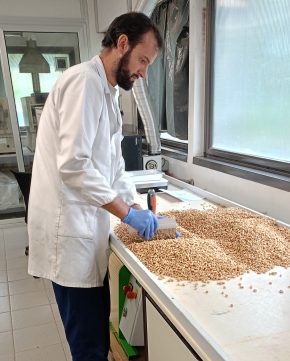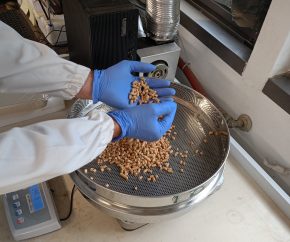Andrea Piazzalunga from Water & Life Lab advises companies to pay attention to moisture content, fine particles and mechanical durability
The ENplus® Testing Bodies play a crucial role in the certification process because they are in charge of conducting standardised laboratory tests on product samples to verify if the pellet characteristics comply with the set of scheme’s requirements. Today, we dive into the topic with our guest – Andrea Piazzalunga from Water & Life Lab – Groupe Carso.
Hello Andrea, tell us when Water & Life Lab became a testing body for ENplus® and why your company decided to join the scheme.
Our laboratory has over 40 years of experience in environmental analysis and was recognized as an ENplus® testing body in 2022. Before that, no laboratory in Italy could perform all the analyses required by the ENplus® certification scheme using accredited methods.
Thanks to the synergy between various Groupe Carso laboratories—INDAM in Italy and SOCOR in France—we quickly established a comprehensive service.
Our attention to this field comes from our collaboration with AIEL, ENplus® National Licenser in Italy. Over the years, we have developed numerous projects with them, mainly focusing on energy recovery from low-environmental-impact woody biomass.
To ensure reliable analytical results, we participate annually in a European inter-laboratory round robin test.
Currently, we work with leading Italian pellet producers and importers, offering them customized analytical packages to monitor product quality. Last year, we participated in a market surveillance project by analysing samples from retail outlets, and public authorities often rely on our services as well.
 Based on your experience, do you often encounter nonconformities with the ENplus® requirements when implementing the analysis of the pellet characteristics? What are the most problematic characteristics that pellet producers and traders should pay extra attention to?
Based on your experience, do you often encounter nonconformities with the ENplus® requirements when implementing the analysis of the pellet characteristics? What are the most problematic characteristics that pellet producers and traders should pay extra attention to?
The primary non-compliance issue we encounter relates to the parameter of over-length. A sample containing pellets longer than 45 mm cannot be classified, which poses a significant challenge for producers.
Additionally, moisture content, fine particles, and durability are other critical parameters where we frequently observe non-compliance. Both pellet producers and traders should pay closer attention to these areas.
Is it common for pellet suppliers to send you their pellets for additional analysis that is not covered by the certification procedures?
We have developed a self-monitoring plan for pellet producers that specifically monitors the parameters we know to be more sensitive: moisture, ash, durability, and fine particles.
Currently, most of the requests come from certification bodies. We expect that in the future, requests from producers will also increase.

What other services does your company provide? To what other clients?
Our laboratory specialises in the analysis of environmental and agri-food products. We have recently developed a service to support bioenergy producers. In addition to analyzing wood pellets and wood chips, we also assess biogas and biomethane. Managers of biomethane production plants seeking to monitor their operations can rely on us for comprehensive support.
